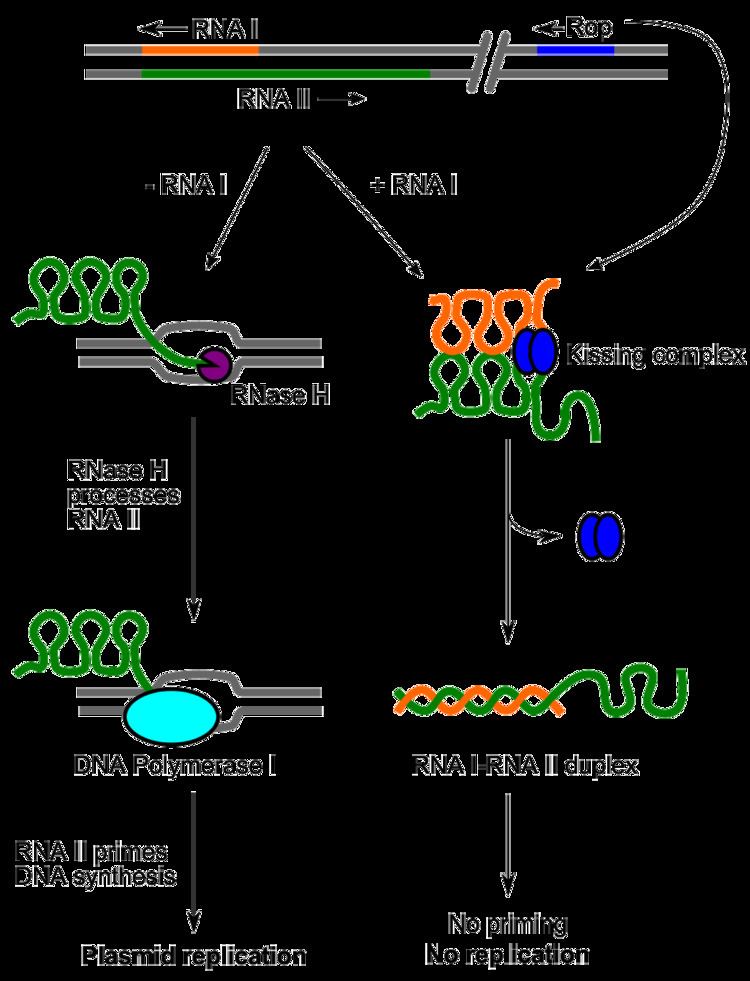 | ||
ColE1 is a plasmid found in bacteria. Its name derives from the fact that it carries a gene for colicin E1 (the cea gene). It also codes for immunity from this product with the imm gene. In addition, the plasmid has a series of mobility (mob) genes. Its size and the presence of a single EcoRI recognition site caused it to be considered as a vector candidate.
Contents
Replication
ColE1 replication begins at the origin. 555bp upstream from this point, RNA polymerase-initiated transcription of RNAII which acts as a pre-primer and begins the synthesis of the leader strand. The transcript folds into a secondary structure which stabilises the interaction between the nascent RNA and the origin's DNA. This hybrid is attacked by RNase H, which cleaves the RNA strand, exposing a 3' hydroxyl group. This allows the extension of the leading strand by DNA Polymerase I. Lagging strand synthesis is later initiated by a primase encoded by the host cell.1
Copy number control
RNAI is a counter-transcript to a section of RNAII and so binds to its 5' end. This alters the folding of RNAII so that the DNA-RNA hybrid is not stabilized and cleavage does not occur. This ensures that at high copy numbers (and so high RNAI concentration), replication is slowed down. Rop is a secondary replication repressor, it stabilizes the RNAI-RNAII hybrid. Rop may be especially important at preventing runaway replication at slow growth rates.
